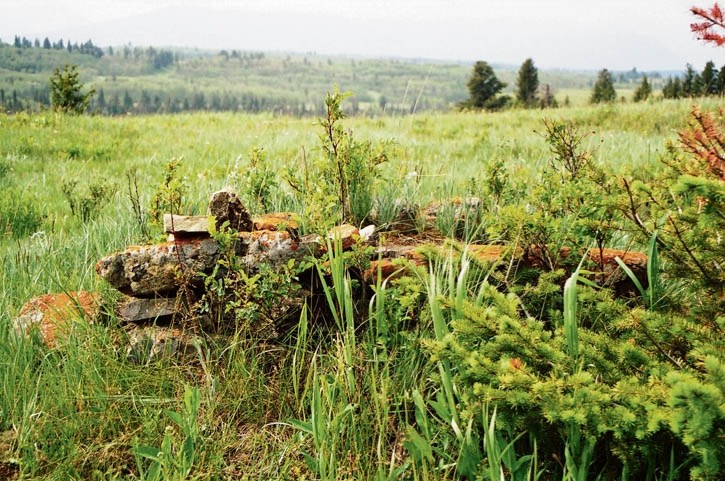The fur trade was a dominant force across much of Canada, setting this nation’s destiny while establishing a significant part of its history.
In the Bow Valley, however, our connection to the fur trade is limited to a foray that famed trader and explorer David Thompson made into the Bow Valley in 1800. He was searching for a route across the Rockies and the ghostly remains of Old Bow Fort, which sits on a plateau overlooking the Bow River and Old Fort Creek on the Stoney Nakoda First Nation reserve, are all that remain.
The Hudson’s Bay Company built Old Bow Fort, known to the company as Peigan Post, in 1832 in the hopes of convincing the Peigan (Piikani) of southern Alberta to travel to the site and trade.
The HBC abandoned Peigan Post after only two seasons. Trade with the Peigan did not occur and there were growing tensions between the HBC and other First Nations in the region.
The Sarcee (T’suu Tina) burned the five-sided stockade shortly after the HBC staff shut down the fort in early 1834.
After it had been abandoned, the ruins of Peigan Post eventually became known as “Old Bow Fort.”
Even though Old Bow Fort was in ruins, it was still a significant site in the Bow Valley, as it was one of few places in this region to have a name.
As a result, Old Bow Fort became a meeting place for travellers and explorers passing through the Bow Valley, according to Emerson Sanford, author, and his daughter, Janice Sanford Beck, of the Life of the Trail series of hiking guides.
“In the very early days of travel along the Bow River and in the Bow Valley, that was an entrance point to the Bow Valley. It was the one place in the Bow Valley that had a name.
“That is where, if people needed a place to change from prairie travel, where they used wagons and so on, to mountain travel where everything had to be on pack animals, they chose to meet because it had a name,” Sanford said Monday (Sept. 30) in advance of his presentation, Old Bow Fort: Entrance to the Bow Valley, at the Canmore Public Library in Elevation Place Tuesday (Oct. 8). Admission is by donation.
Sanford said he plans to share the history of Old Bow Fort in his presentation and then talk about the history of the fort through the people who stopped there, specifically James Hector, Eugene Bourgeau, Capt. John Palliser, James Sinclair and the Earl of Southesk.
Along with those historical figures, Sanford said he plans to share the stories of individuals who would have passed by the fort, including Rev. Robert Rundle and Father Pierre Jean de Smet.




